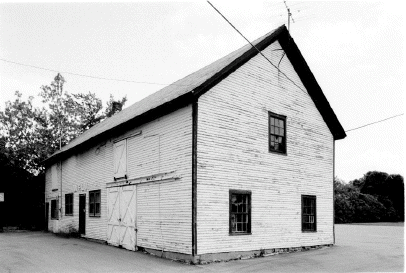

|
|
|
|
|
|
|
|
|
|
History of Pomeroy Hall (5)
After the Medical College vacated
the old Medical College building in 1884, the third floor amphitheater
was used for student theatrical performances and the rest of
the building is virtually abandoned.27
In 1886, however, the Vermont Legislature passed an act which
established an Agricultural Experiment Station with an appropriation
of $3000 annually. The purpose of the Experiment Station is to
investigate fertilizers, pesticides, soils, and plants and other
factors which may improve techniques and production on farms
in Vermont.28 W. W. Cooke was
hired as the first professor of agriculture and became the director
of the new Experiment Station.29
The Experiment Station occupied the second floor of the old Medical
College building. The former anatomical museum was converted
to a chemical laboratory, and the two rooms in the brick ell
were converted into the director's office on the west side and
a storage room on the east side.30
On December 2, 1886, The University Cynic lauded the arrival of the Experiment Station:
It seems that the University can now congratulate itself on the added feature of an Agricultural Experiment Station- which is, rather, the new form of an old feature. How strange it will seem to have the former Medical College building turned into a temple to Ceres! No more shall the comely old brick fane be desecrated with theatrical performances! All must recognize the enterprise as one eminently proper in this agricultural State of Vermont. The wonder is the State has not awakened sooner to its need. With the tangible reality of an appropriation and a building, the professorship of agriculture means much for this University in future.
The Morrill Act, which had been signed into law in July 1862 by President Abraham Lincoln, established the land grant college system designed to give greater access to the study of science and technology. The Vermont Legislature responded by forming the Vermont Agricultural College in November 1864, and then in November of 1865 created the University of Vermont and State Agricultural College.
Not until 1888, however, did the University of Vermont establish a separate Department of Agriculture and initiate a two year program for students. The lack of commitment to the study of agriculture by the University had resulted in criticism and controversy, and a movement to form a separate Vermont School of Agriculture.
In order to attract agriculture students and appease their critics the University offered free tuition and laboratory fees which were paid for by the University's general fund.31 An eleven week short course was also offered during the winter months. These lectures were provided free to the public and arrangements were made with the Central Vermont Railroad and Burlington and Lamoille Railroad to give free return tickets to persons attending the lectures. Topics included farm drainage, growing seasonal fruit, animal diseases, origins and properties of soils, and insect damage to crops. Lectures were delivered in the lecture room on the first floor of the new Experiment Station.32
In 1887 President Grover Cleveland signed the Hatch Act which established a $15,000 annual appropriation for state agricultural experiment stations to conduct their research. The funds became available in October of the following year.33 At a board meeting of the Experiment Station in March 1887 Director Cooke proposed purchasing a farm for conducting agricultural experiments. Work by the Experiment Station up to this point had been performed on privately owned farms or in the Station building. A resolution to purchase or lease a farm of 50 acres or more was passed by the board,34 and the Experiment Station purchased a 104 acre farm in South Burlington on which to conduct their agricultural research. The farm, which was located on Dorset Street three and a half miles from the University, included a barn, house, tool house, and ice house. 35

Pomeroy barn, circa 1888.
After the farm was acquired Director Cooke had a barn built behind the Experiment Station to house a horse he used to travel to and from the new farm.36 Soon after the farm was purchased it was criticized for being both poorly located and poorly managed, and it was sold.37 In 1891 a new 80 acres farm was purchased at the present location of the University farm on Spear Street. A mechanics building, barn, dairy building, and greenhouse were built on the new farm.38
Although the initial appropriations which accompanied the creation of the Agricultural Experiment Station were insufficient to refurbish the old Medical College building, the passage of the Hatch Act made funds available for its improvement. In 1890 a number of alterations were made. A 100 light Springfield gas lighting system was installed in the Experiment Station laboratory and offices.39 The first story laboratory of the Medical College was converted into a milk laboratory,40 and the second story of the 1880 addition was converted into a botanical laboratory which was used until Williams Hall was completed in 1896.41
The seventeen foot high third story of the main block was divided into two stories and converted into dormitory rooms for the growing number of agriculture students.42 The large round arched windows of the 1858 third story addition were removed and replaced with two windows. The new third story windows had splayed lintels similar to the first and second story windows, while the new fourth story windows were shorter, with segmental arch lintels which extended above the brick corbelling. Eight dormitory rooms were built in the upper two floors of the main block and two were built in the third story of the 1858 ell.43 By the following year the dormitory rooms were filled and some students were forced to seek housing in private residences in town.44